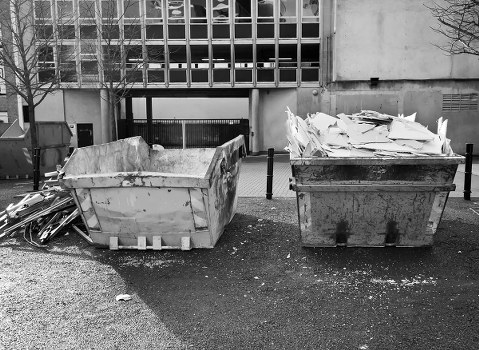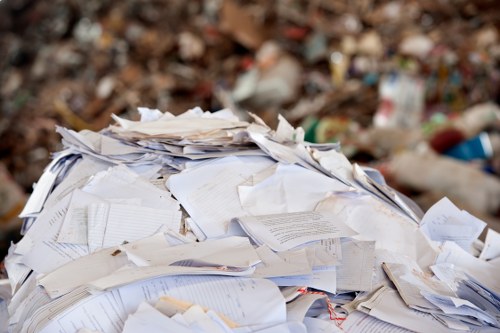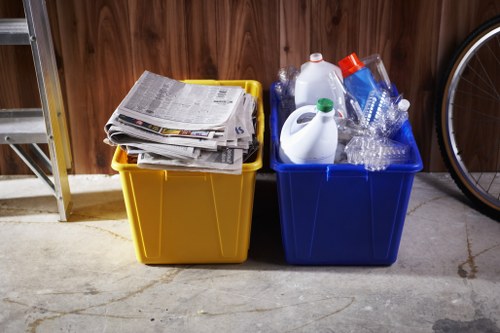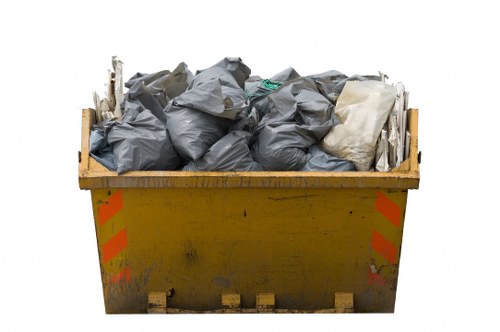Litter Clearance in Waste London: Keeping the City Clean and Green
Introduction to Litter Clearance

London, a bustling metropolis, attracts millions of visitors each year. With its vibrant culture, historical landmarks, and diverse communities, maintaining cleanliness is a priority. Litter clearance in waste London plays a crucial role in preserving the city’s beauty and ensuring a healthy environment for its residents and visitors.
Effective waste management is not just about removing trash; it’s about creating sustainable practices that reduce waste generation and promote recycling. Understanding the intricacies of litter clearance helps in appreciating the efforts made to keep London clean.
This article delves into the various aspects of litter clearance in London, exploring the methods used, challenges faced, and the impact on the community and environment.
The Importance of Litter Clearance

Litter can have detrimental effects on both the environment and public health. It clutters streets, parks, and waterways, leading to pollution and attracting pests. Proper waste management is essential in mitigating these issues.
Beyond aesthetics, effective litter clearance reduces the risk of diseases spread by vermin and contaminated surfaces. It also fosters a sense of pride and responsibility among residents, encouraging them to participate in keeping their neighborhoods clean.
Moreover, a clean city enhances tourism and the overall quality of life. Visitors are more likely to enjoy their stay in a well-maintained environment, contributing to the local economy.
Methods of Litter Clearance

London employs a multi-faceted approach to litter clearance, utilizing both manual and automated methods to ensure thorough cleanliness.
Street Cleaning
Regular street cleaning is fundamental in maintaining urban cleanliness. Dedicated street sweepers remove debris, leaves, and other waste materials from roads and sidewalks.
Bins and Recycling Centers
Strategically placed bins throughout the city encourage proper waste disposal. Recycling centers facilitate the segregation and processing of recyclable materials, reducing landfill waste.
Community Initiatives
Engaging the community through clean-up drives and awareness campaigns fosters collective responsibility. These initiatives not only remove existing litter but also educate the public on sustainable practices.
Challenges in Litter Clearance

Despite robust efforts, litter clearance in London faces several challenges that hinder its effectiveness.
High Population Density
With over 9 million residents, the high population density leads to increased waste generation, making it difficult to manage effectively.
Seasonal Fluctuations
Different seasons bring varied waste patterns. For instance, summer months see more litter due to tourism, while winter can complicate waste collection with snow and ice.
Funding and Resources
Allocating sufficient funds and resources for waste management is a persistent challenge. Ensuring that all areas receive adequate attention requires careful planning and budgeting.
Technological Advancements in Waste Management

Embracing technology has significantly enhanced litter clearance efforts in London. Innovations such as smart bins, automated street cleaners, and data analytics play a pivotal role in modern waste management.
Smart Bins
Equipped with sensors, smart bins monitor fill levels and optimize collection routes, reducing operational costs and increasing efficiency.
Automated Cleaning Equipment
Advanced street sweepers and robotic cleaners ensure thorough litter removal with minimal human intervention, maintaining high cleanliness standards.
Data-Driven Strategies
Analyzing waste generation patterns through data helps in predicting trends and implementing proactive measures, ensuring a cleaner city.
Environmental Impact of Litter Clearance
Effective litter clearance contributes significantly to environmental conservation in London.
By reducing waste accumulation, it prevents pollution of air, soil, and water bodies. This preservation of natural resources ensures a sustainable environment for future generations.
Moreover, promoting recycling and waste reduction minimizes the burden on landfills, lessening the environmental footprint of the city.
- Prevents contamination of water sources.
- Reduces greenhouse gas emissions from decomposing waste.
- Supports biodiversity by maintaining natural habitats.
Community Engagement and Education
Engaging the community is vital for the success of litter clearance initiatives. Educating residents about the importance of proper waste disposal and recycling fosters a culture of responsibility.
Schools, businesses, and local organizations participate in awareness campaigns, encouraging everyone to contribute to a cleaner London.
Educational Programs
Implementing educational programs in schools teaches children about environmental stewardship from a young age.
Corporate Partnerships
Collaborating with businesses ensures comprehensive waste management, as companies adopt sustainable practices in their operations.
Volunteer Opportunities
Providing volunteer opportunities for residents promotes active participation in keeping the city clean, strengthening community bonds.
Policy and Regulation
Government policies and regulations underpin the effectiveness of litter clearance in London.
Strict enforcement of waste management laws deters illegal dumping and ensures compliance from residents and businesses alike.
- Implementing fines for littering and illegal waste disposal.
- Setting recycling targets to encourage sustainable practices.
- Providing incentives for businesses adopting eco-friendly waste management systems.
Waste Management Legislation
Comprehensive legislation outlines the responsibilities and obligations of various stakeholders in maintaining cleanliness.
Incentive Programs
Offering incentives for recycling and waste reduction motivates individuals and businesses to adopt sustainable behaviors.
The Role of Technology in Future Waste Management
Looking ahead, technology will continue to revolutionize waste management in London.
Innovations such as artificial intelligence, machine learning, and the Internet of Things (IoT) will further enhance the efficiency and effectiveness of litter clearance.
- AI-Powered Sorting: Improving recycling processes through automated sorting systems.
- Predictive Maintenance: Using data to anticipate and address maintenance needs of waste management equipment.
- Smart City Integration: Seamlessly integrating waste management systems with other smart city initiatives for optimized resource utilization.
Artificial Intelligence
AI can analyze waste patterns and optimize collection strategies, reducing costs and improving service quality.
IoT Devices
Integrating IoT devices can provide real-time data on waste levels, facilitating timely and efficient waste collection.
Machine Learning
Machine learning algorithms can predict waste generation trends, enabling proactive planning and resource allocation.
Sustainability and Future Goals
London is committed to becoming a zero-waste city, aiming to eliminate landfill waste by promoting recycling and reuse.
Future goals include increasing recycling rates, reducing single-use plastics, and encouraging a circular economy where waste is minimized, and materials are continuously reused.
- Achieving higher recycling targets through community engagement.
- Implementing comprehensive waste reduction strategies.
- Promoting the use of sustainable materials in products and packaging.
Zero-Waste Initiatives
Adopting zero-waste principles involves redesigning systems to minimize waste generation and maximize resource efficiency.
Circular Economy
Transitioning to a circular economy ensures that resources are kept in use for as long as possible, extracting maximum value before recovery and regeneration.
Public-Private Partnerships
Collaborating with private entities accelerates the implementation of sustainable waste management solutions.
Conclusion
Litter clearance in waste London is a vital aspect of urban management that ensures the city remains clean, healthy, and attractive for both residents and visitors.
Through a combination of effective waste management practices, community engagement, technological advancements, and supportive policies, London continues to make strides towards a sustainable and zero-waste future.
Maintaining a clean city is a collective responsibility, and everyone’s participation is essential in achieving these goals.
Contact us today to learn more about how you can contribute to keeping London clean and green.